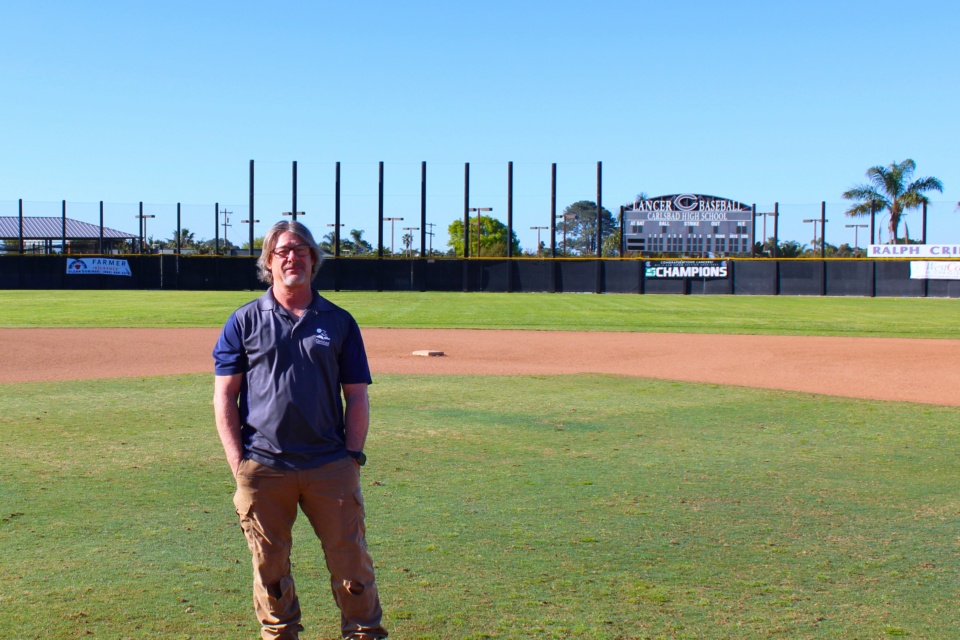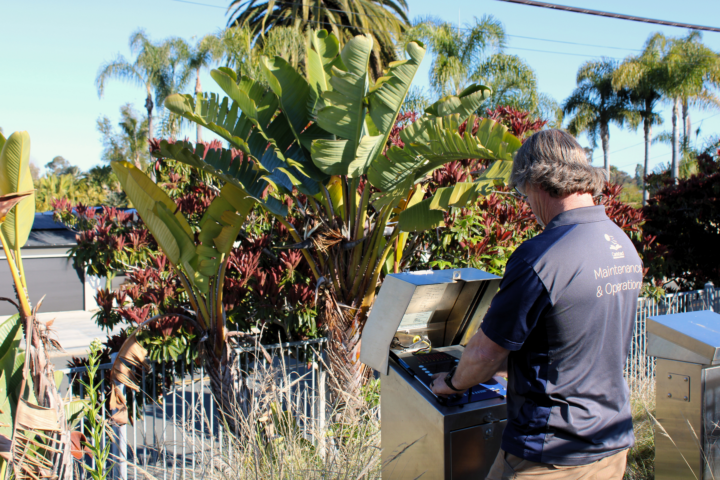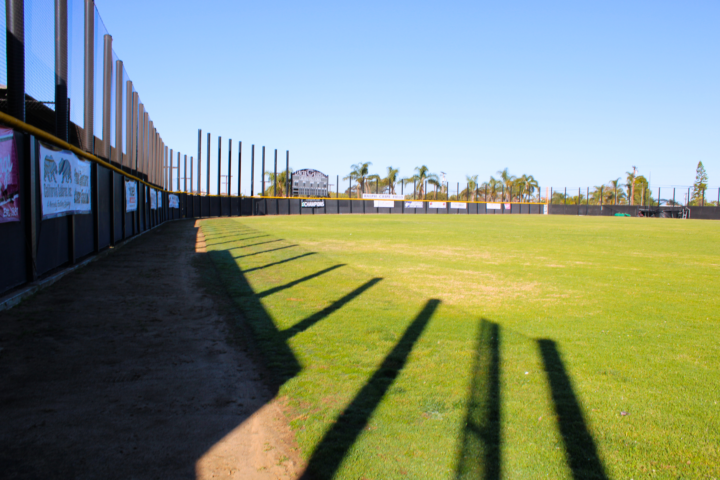Green fulfillment: How smart irrigation leads to job satisfaction in Carlsbad School district
May 2, 2024

Most of us spend the greater portion of our days at work, so when we look for a new role, we’re encouraged to find one that offers us ‘job satisfaction’. But what does it mean, really, to be satisfied with our work? What constitutes that satisfaction?
Perhaps it’s about providing a service that is gratefully received, or overcoming a challenge. Is job satisfaction simply about doing what’s required of you as efficiently and productively as possible? Is it to do with being recognized for that work? Or is it more about creating a tangible difference in the world?
For some of us, we’ll be lucky to check off one or two of these forms of job satisfaction when we make a mental list. But for others, like Jeff DiSabatino, Irrigation Specialist at Carlsbad Unified School District, every day in the role satisfies in a multitude of ways.
***
Carlsbad USD incorporates two high schools, three middle schools and nine elementary schools, as well as two alternative schools; 16 sites in total. With over 11,000 students and close to 1,000 teachers and staff utilizing these facilities during the school year, it’s fair to say the grounds surrounding them get their use.
DiSabatino is responsible for managing the School District’s irrigation systems, from the point of connection to all of the controllers. That’s 40 smart controllers and 18 DC controllers covering 1,920 irrigation zones.
That’s a lot of irrigation.
If there’s a failed controller, he troubleshoots it, and if necessary, rewires it. His extensive knowledge of the electrical aspects of irrigation systems is buttressed by earlier employment as a journeyman electrician, specializing in low voltage systems.
At Carlsbad USD, there’s a grounds crew that is responsible for landscape maintenance; they alert DiSabatino if there’s an irrigation issue they’ve spotted. Similarly, DiSabatino liaises with contractors in the event of construction work, identifying any specific irrigation requirements.
He developed the District’s irrigation specifications, to ensure multi-site consistency.
“I’m in the process of bringing our smart controllers onto the cloud, so they can all be managed from one point of access,” he explains. “So for our large schools, we use Calsense smart irrigation controllers, because they provide us with that central control. That’s a key consideration, and it enables us to efficiently monitor and operate those larger sites without having to be constantly inspecting them for any required maintenance, for example. The system alerts me to any excess flow issues that indicate a leak or damage, and I can identify the specific irrigation zone and head there directly. It saves me a lot of time.”
Efficiency was key to DiSabatino when he took up his current role at Carlsbad USD in 2016.
“I started going through all of our irrigation systems, zone by zone, and testing everything. If there was a problem, with the controller or the valves or even the sprinkler heads, I’d make those corrections.
“I now have a system that’s running efficiently for the long term and for easy maintenance. It’s enabling that ease of maintenance that’s a priority. Once that’s established, it makes my job much simpler.”

Sometimes job satisfaction comes from facing a challenge and solving a problem.
“Managing a multi-site irrigation system is a challenge in itself,” DiSabatino says. “Before I arrived, there’d been many hands over the years making adjustments to these systems, so getting it back to operating correctly was a big task.
“On one site, for example, I had to ensure there was equal distribution at the sprinkler heads, that the heads themselves were the correct type for their use; that kind of thing. I love doing that; getting all those issues resolved and working.
“And once it was done, I could stand back and look at it and think, this is great. It’s satisfying. And then you move on to the next one.”
For DiSabatino, the satisfaction here is also in utilizing all of those skills he’s developed over the years to solve these problems.
“It takes knowledge to troubleshoot the wiring and electrical side of things; knowledge of the mechanical and water aspects; getting them working all together; and lo and behold that the system’s operable. I love it.
“I love the problem-solving part of my job. That’s deep in me. I’ve always been a problem solver. I love troubleshooting. And I get to do that all the time.”
***
Working for schools brings its own unique challenges, with soccer fields as well as busy baseball and softball fields to take into consideration, alongside the other green spaces around the schools’ grounds.
“To make sure the fields at the schools are playable, I really need to ensure the moisture content in the soil is right,” DiSabatino says. “Some of the fields have more of a sandy loam, and others are clay. Because not all of the controllers are on the cloud yet, I have to actually physically go out and walk the fields to ensure that I get that watering schedule right.
“So I may be watering every day of the week, but it could be, for example, at 30 or 40% on three of those days, instead of 100%. I’ve got to keep a close eye on it, because keeping those fields healthy is critical.”
DiSabatino explains that moving the controllers to the cloud will enable remote central management and monitoring of the irrigation systems, which will reduce the need for him to make on-site adjustments.
But school sports fields are busiest in the warmer months, of course, so it’s only really possible to do these kinds of maintenance projects in the winter.
“If we have a relatively mild winter, that works the best for me, because I can go through and run everything and get it prepared for spring,” he says. “I can make sure everything is ready when the first teams step onto the field for the new baseball and softball seasons.”
It’s not just the sports themselves that have an impact on the district’s fields and green spaces; the sheer volume of foot traffic poses a challenge too. With more than 10,000 pairs of feet moving around the Carlsbad school district at any one time, wear and tear is an ongoing issue. And that’s before you take into account the nature of some of the owners of those feet…
“You’ve always got something to fix,” DiSabatino says. “Some kid kicks a sprinkler head on purpose, and it runs all night long. During COVID, I had one campus that was working fine; I had the system ticking on at a certain time, and there were no students at the school. And then I had perhaps 30 sprinkler heads in a row, all kicked off. I had no idea what happened, because the school was empty. So I bought new heads, put them all back together, and two weeks later it happened again. I couldn’t understand it. So I changed the start times, and it went away.
“Eventually it dawned on me: It’s because all of these kids are out of school, and they’re roaming around and figured out that these heads have popped up, so let’s kick them off! That’s very much a school district problem, but it was good to be able to solve the mystery.”
***
When DiSabatino was a kid himself, he wasn’t one of those kicking sprinkler heads for fun. That’s mainly because his dad ran a landscaping company.
“I felt like I was in the industry,” he laughs. “So early on, I was the one saying ‘Don’t do that! Don’t break that stuff!’”
It was through that exposure to his father’s business that DiSabatino realized he had a liking for the irrigation side of the business. He worked with a variety of landscape companies before starting his own business, Turning Point Landscape Services, in 2006. Turning Point specializes in irrigation installation and management.
“I progressed from more general landscape maintenance to specializing more in irrigation management, primarily because I enjoy it! So when the opportunity came to become the Irrigation Specialist for Carlsbad USD in 2016, I jumped at it.”
***
Another satisfaction is in doing the right thing by the environment. In the case of Carlsbad USD irrigation, that means a focus on water conservation, even when it’s not mandated by the local water district.
“I’m very conscious of the responsibility to conserve water,” DiSabatino says. “I try to convert as many nozzles as I can to high efficiency types, and to use the technology available, like our Calsense controllers, to ensure we use water as wisely as possible too.
“I’m the same with my clients at Turning Point. I try to migrate them over to the highest efficiency heads and get them using smart controllers and weather stations. It’s the same principle with the school district, just in a bigger format.
“The improving nature of technology means that there’s an added satisfaction in keeping on top of new developments and implementing them where they can make the most positive difference. That involves experimenting to a certain extent; trying things out to see which technologies and products will work best for your specific needs.”
***
When you’re running irrigation at over 18 sites, trying to keep everything green and useable, organization is key. There’s a specific kind of satisfaction in implementing an organizational plan that makes it all feasible.
“I’ve developed a route, which is set up in my calendar and tells me I have X amount of time at a site on a given date,” he says. “While I’m there, I might wet test four or five zones: check one, repair it if it needs it, then move on to the next one. I’m doing about two schools a day at that rate.
“But I keep the schedule fluid, so if there is something like a mainline break or something else I have to address, that can be factored in. Maintenance goes on the backburner; emergencies get dealt with, and then it’s back to standard maintenance.”

Sometimes all of those satisfactions happen at the same time.
DiSabatino points to the case of the Carlsbad High School baseball field.
“I’d been told that for six or seven years the field hadn’t been quite right, no matter what was done in terms of irrigation,” he says. “It just hadn’t ever been figured out so that it was in the best condition for playability. None of the irrigation was working; there was no DC controller; nothing like that.
“I took that as a challenge. I spent a week going through it and getting all the irrigation zones working, testing wires and getting everything functional. And there’s a great feeling that comes after you’re done and you can fire it off from the controller and it works perfectly; that’s pretty satisfying.
“You’ve irrigated a baseball field, you’ve verified it, and it just works.”
But it wasn’t just personal satisfaction in this case. This time around, DiSabatino received independent, third-party recognition that his work had paid off.
“That field won regional field of the year in a field of almost 30 high school baseball fields,” he says. “So it’s top notch; one of the best in our state, hands down, which is awesome. And when I reflect on that, I’m really proud. That’s satisfying, for sure.”
